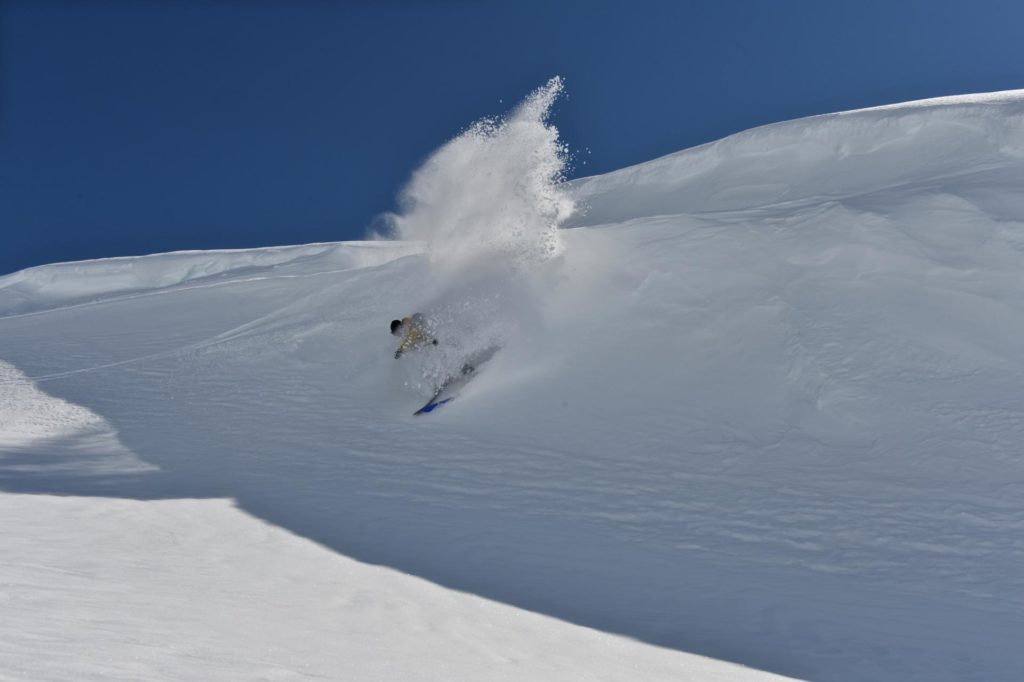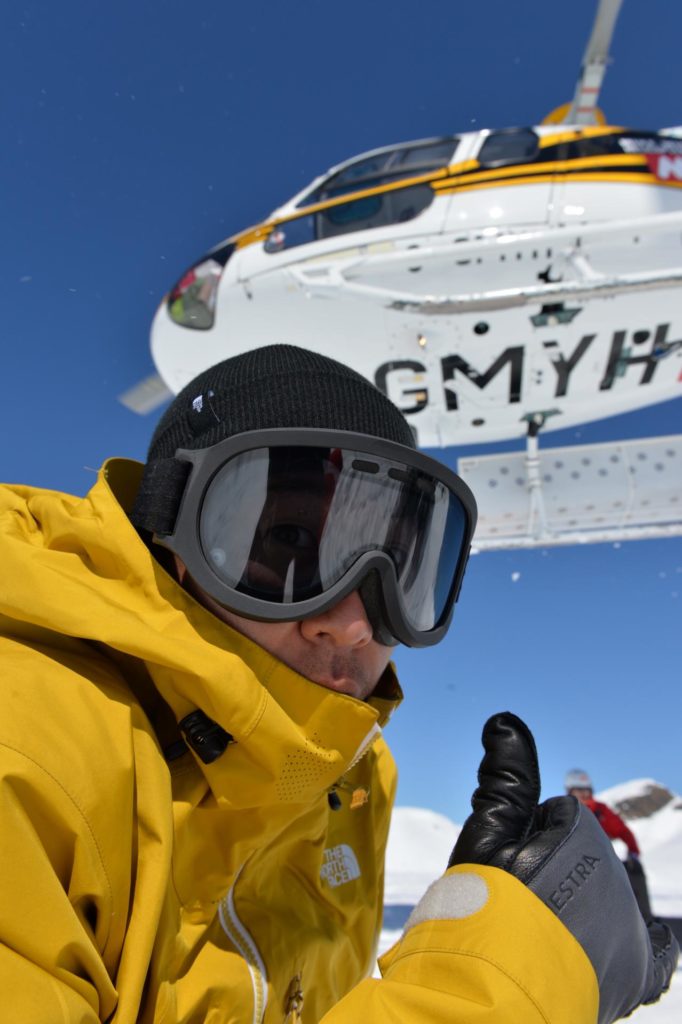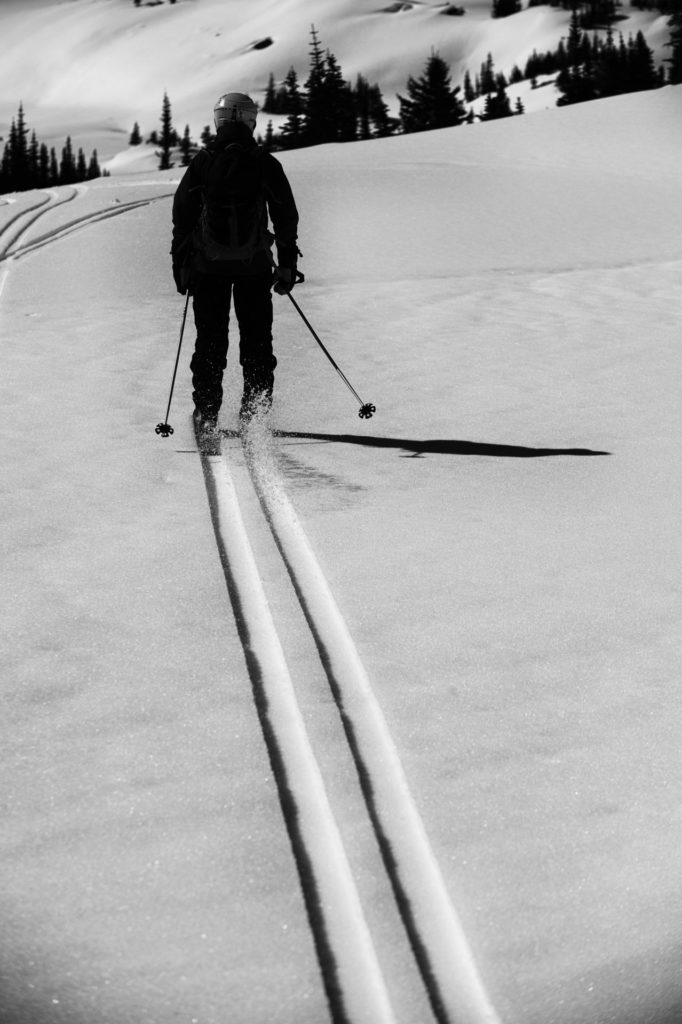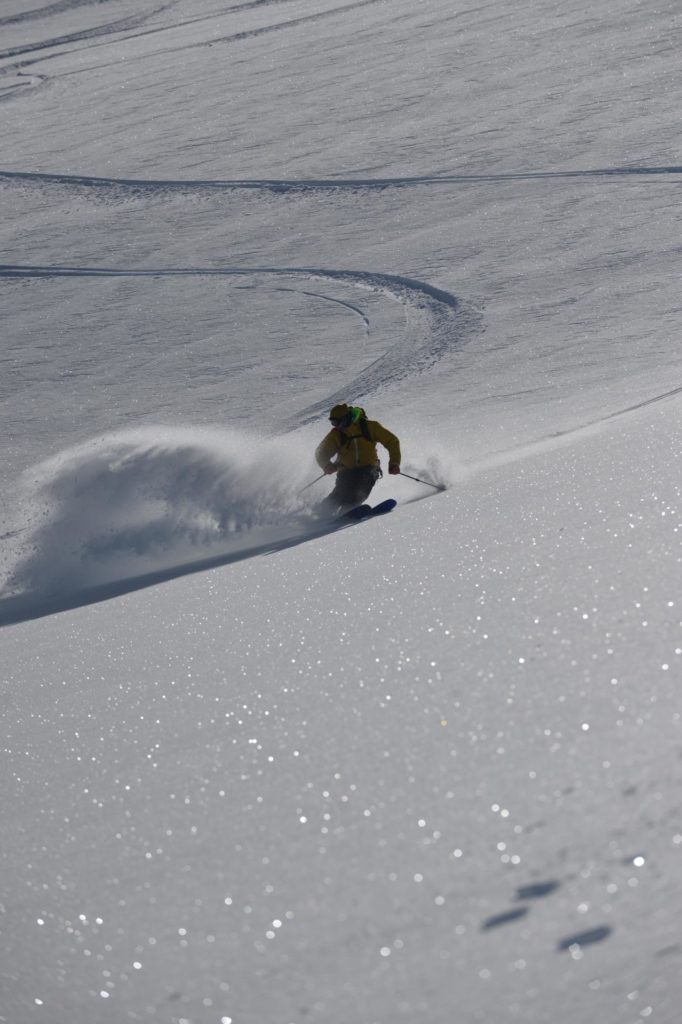After nearly three decades of competing, Olympic slalom skier and Hokkaido native Akira Sasaki returns home to share Japan’s powder skiing to the world.
Rie Miyoshi: Your path to become Japan’s top alpine skier was a bit unconventional.
Akira Sasaki: I’m from a small town called Hokuto, which is right next to the more famous city of Hakodate. We don’t get a lot of snow there, but my family, especially my mom, loves to ski. We would travel four hours to Sapporo and ski near there.
At the time, there wasn’t much hype about powder snow in Japan. When people talked about skiing, they were mainly focused on racing. So for someone like me who had been skiing since childhood, it was natural for me to race.
By the time I was in middle school, I was the fastest skier in Japan, even though I hadn’t really been taught by anyone. I had my own style and, before I knew it, I was representing Japan. At 16, I went to a ski high school in Otaru and casually decided, “I guess I’ll become an alpine ski racer.”
RM: You were based in Austria for most of your adulthood. When did you move there?
AS: After high school, I was sent to a college in Tokyo. It was a huge culture shock. It was hot, there’s no snow, and I was crammed in a train every day. All I wanted to do was ski. I told my parents I was going to Europe to train. I bought a one-way ticket to Austria and told them I couldn’t come back.
Alpine skiing’s origins are in Europe, and they have good training there. As Japan’s representative, I was assigned an Austrian coach who lived near me and trained me for eight years.

RM: When did you start competing globally?
AS: I made my debut at 19 at the World Championships and then went to the World Cup the following year. The timing was amazing because all the races were held in Austria. It felt like a sign.
When I was 20, I went to the Olympics at Salt Lake City. Until then, I had skateboarded, surfed and played soccer but still had no formal physical training. I was like Pinnochio, “faking” it but really excited at the same time. I also had a big mouth, telling everyone I was going to the World Championships.
When I got there, I performed poorly. I succeeded in Japan because the level is overall lower here, but on a global scale, I was nowhere near the top. I got discouraged, thinking alpine ski racing wasn’t for me, and I should go into free riding.
However, my coach encouraged me and gave me some wisdom when he asked me, “You’ve worked hard to get to where you are today, right?” I realized…no, I hadn’t. I had no formal training. This is when I got serious about physical training my body. It was kind of late, right?

RM: Well, the training paid off.
AS: Physical training is so important. I reached the World Cup podium at 22 and was in the world’s top 15 alpine skiers for five years. There were ups and downs in between, but I managed to race until the recent Sochi Olympics.
RM: After Sochi, you stopped racing at 32. What are you doing now?
AS: I’m a big mountain skier. No more competitions. What’s important to me now is to smile and enjoy life, skiing and other activities such as surfing and skateboarding. I moved back to Japan three years ago and have been enjoying the powder here.
As an athlete, taking care of your body is vital. In Tokyo, I run two physiotherapy and stretch studios under the Re-Ra-Ku brand.
I couldn’t represent Japan one year and ran out of money. But one sponsor who didn’t drop me was Re-Ra-Ku. They really supported me then.
After I stopped racing, the president gave me one of the shops, saying it’s important to continue running something. and training is something I want to educate people about.
I also run an eyewear goggles brand called MC, which I launched when I was 22.
RM: Sounds like you’ve become a successful businessman.
AS: Honestly, I’m not interested in making a whole lot of money. In fact, I run the goggles brand just barely enough so it doesn’t crash. What I really like is creating new things or sharing knowledge I find important or interesting – that’s enough for me.
RM: Starting this season, your sponsors Salomon and Atomic are starting Salomon Experience, where you’ll be taking people on backcountry tours.
AS: Racing is my backbone, but riding powder is something close to my heart and what I’ve been doing since I was a kid. You won’t find mountains as accessible to the city as you do in Hokkaido. It snows consistently, so instead of clamoring with other people for the slopes, we’re blessed with fresh tracks every day. We’re also surrounded by the ocean, so we get really rich, fine powder.
When people ski with me, I guarantee they’ll have fun. I love snow, so I teach people about it. It’s important to learn about the weather so you can enjoy riding even more.
Hokkaido is very local and of course there are lots of great hidden spots, but it’s also very big, and these secret backcountry slopes are generally easy to access. So maybe, if they’re lucky, I’ll take my guests there.
RM: Over the last decade, Japan has made a name for itself as a ski destination; what do you see for the future in winter sports tourism here?
AS: For the longest time, Japan lagged far behind Europe and the U.S. regarding winter tourism culture, technology and hospitality. But with inbound travelers increasing, we Japanese people need to recognize the value of our culture, history and powder and share these treasures with travelers. It’s important too to see what these visitors are looking for and improve what we offer.
If you are interested in joining a backcountry tour with Akira Sasaki this winter, visit Outdoor Japan Adventures where you’ll find tours by Salomon Experience and other top tour companies in Japan.







